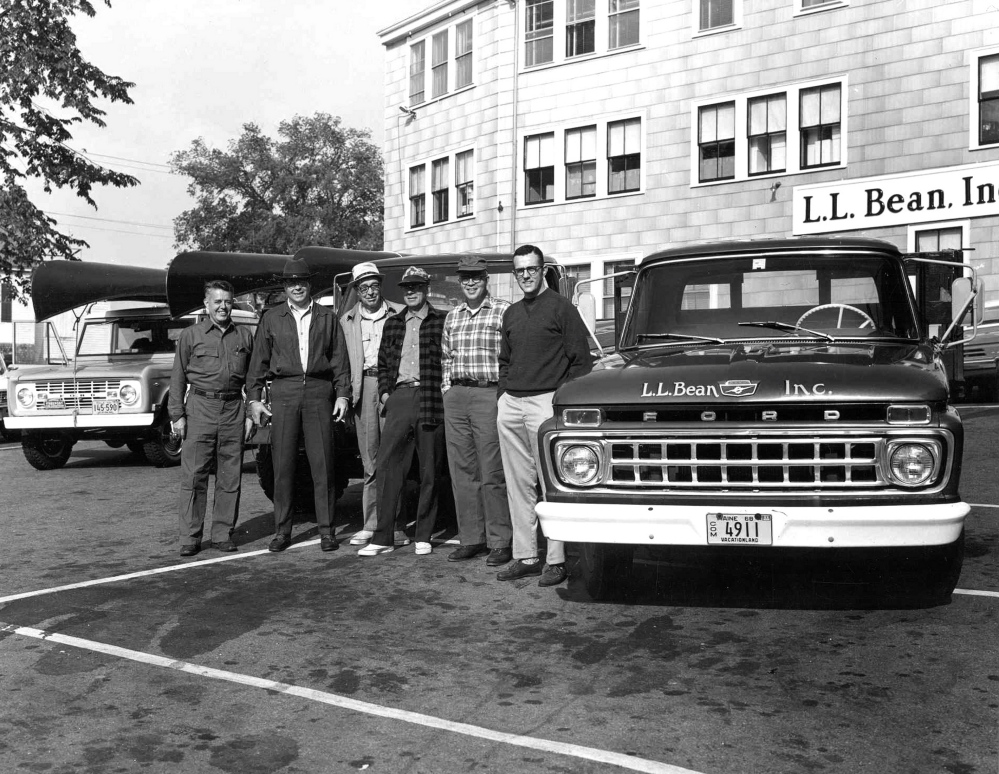Leon Gorman was a marketing innovator whose willingness to try new things and embrace technology saved the company from stagnating in a sea of plaid flannel and fishing line.
Although company founder Leon Leonwood Bean relied on his ingenuity to start the mail-order outfitter – he created his catalog mailing list by acquiring the addresses of out-of-staters who got Maine hunting licenses – the company had stopped growing by the late 1960s, when Gorman assumed its stewardship.
His grandfather and uncle, who managed the company before Gorman took the top spot in 1967, had steadfastly refused to modernize the business. L.L. was fond of saying, “I can eat three meals a day. I can’t eat four,” his justification for maintaining the status quo, according to Gorman’s memoir “L.L. Bean: The Making of an American Icon.”
But Gorman was of a different mind.
Five years after assuming the presidency, he introduced computers to help manage the growing mail-order lists. The technology allowed the lists to be divided into targeted product segments – fishing for some, hunting for others, apparel for all. Catalog recipients that numbered 1.8 million in 1967 had grown to 5.9 million by 1975, with a corresponding increase in sales from $4.7 million to $29.5 million.
But Gorman knew that was just the beginning. He hired Bill End as marketing director, and in 1976 he spearheaded the company’s foray into direct marketing.
The company tested techniques for prospecting new customers that included renting other cataloguers’ mailing lists, performing market research on people’s likes and dislikes about products, modifying shipping and handling charges, and discounting to spur Christmas shopping. That research led to more extensive and efficient catalog mailing plans. The result? By 1980, sales topped $121 million.
Gorman realized the importance of customer feedback in determining the future of the company. At a Northwestern University seminar in 1984, he learned about a matrix that focused on the merchandising and service attributes that most influenced customer buying decisions.
The index was implemented at L.L. Bean. Customers were asked about the company’s most important services and their answers were weighted and ranked. Then customers were asked the same questions about competitors’ services and products.
To get more intelligence on competitors such as Cabela’s, Eddie Bauer and Land’s End, L.L. Bean employees would place orders with their rival companies and then measure things such as the time an order took to ship, whether the product was out of stock and the quality of the telephone exchange. They returned products and tested the competitor’s guarantee.
From all that research, L.L. Bean could judge its performance against competitors, giving it real data to achieve its goal of being the best – a formal strategy the company adopted.
The attention to detail paid off. Consumer Reports magazine did a 1987 study rating companies within specific product categories. L.L. Bean was judged in seven categories – sporting goods, women’s sportswear, etc. – and ranked No. 1 in each.
Customer service was the priority, but it cost money to maintain. The company’s returns, which had averaged 30 percent in 1975, had shrunk to about 15 percent in 1990. Sales were near $650 million then, but expenses also had risen, cutting into the company’s profitability.
Gorman had been adamantly opposed to increasing the company’s retail presence, even though many of his advisers saw it as the way to bolster sagging sales. He worried that the company was not set up for retail – in its inventory, logistics, management and more.
“I simply did not want to go retail,” Gorman wrote. “Every intuition told me it was the wrong thing to do.”
But Gorman saw that the company was doing a lot of mail-order business with Japan, and tourists were coming to the Freeport flagship store by the busloads to shop.
He signed an agreement in 1992 with a Japanese company to open two stores there. The first store did 40 percent over projections, and by 1995 four stores were open.
Another innovation of the 1990s – the Internet – provided a map for L.L. Bean’s future success. The company launched online ordering in 1996, adding to its catalog, retail and phone operations. But Gorman didn’t follow the outsourcing trend adopted by many retailers. Customer service continued to be handled by well-trained Mainers.
By 2000, the website generated $164 million in sales, about 15 percent of total sales. In 2009, online orders overtook catalog and phone orders.
Gorman was recognized for his marketing achievements with a 1992 induction into the Direct Marketing Association’s Hall of Fame.
Send questions/comments to the editors.



Comments are no longer available on this story